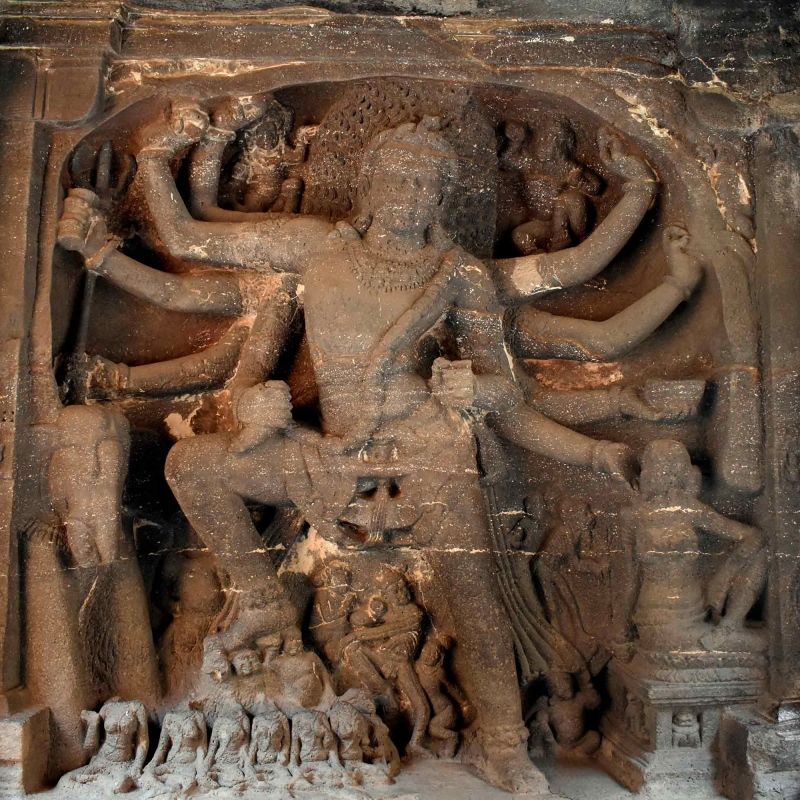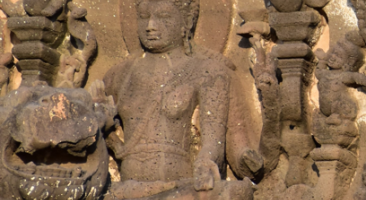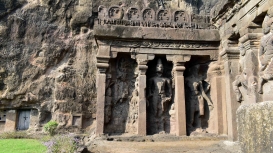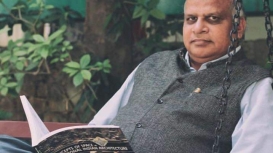The Kailash temple at Ellora, a monolithic rock-cut shrine dedicated to Lord Shiva, represents a marvel in ancient Indian art. Built by the Rashtrakutas of Manyakheta, the walls of the temple are carved with legends and episodes from the Puranas, Mahabharata and Ramayana. The temple has carvings of different forms of Shiva and other Hindu divinities. The Shiva sculptures can be broadly classified under Samharamurti or the aggressive form, Anugrahamurti or the benign form, Nrittamurti or Shiva’s dancer form, and Shiva as guru or the teaching form.
According to the Archaeological Survey of India, it took 200 years and 10 generations to complete the work of this temple. The temple was planned and its construction started under the Rashtrakuta king Dantidurga but its major work was done during the reign of Krishna I. Thus, it may be said that the artistic activities of the temple were carried out in several phases.
The objective of this module is to bring to light the sculptural art of the Kailash temple with special reference to Shiva images. The module will be focused on studying iconography, style and aesthetical elements of the Shiva sculptures.




